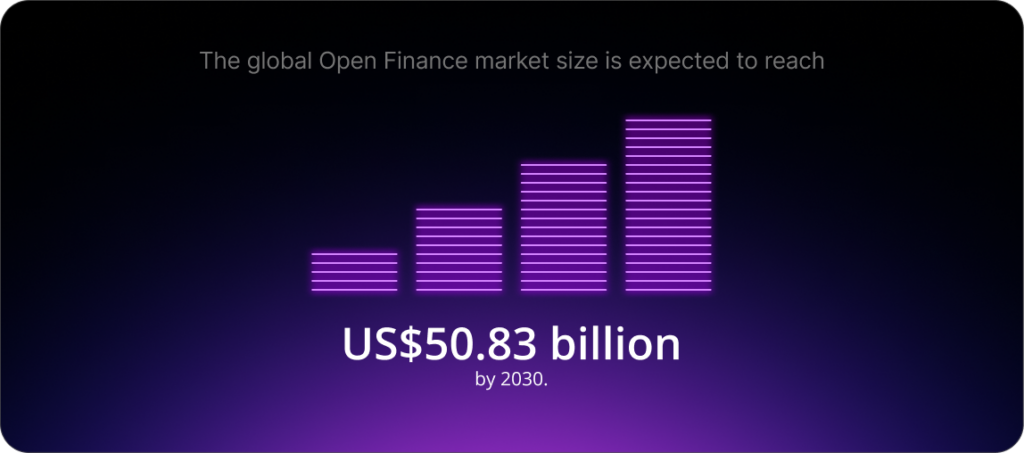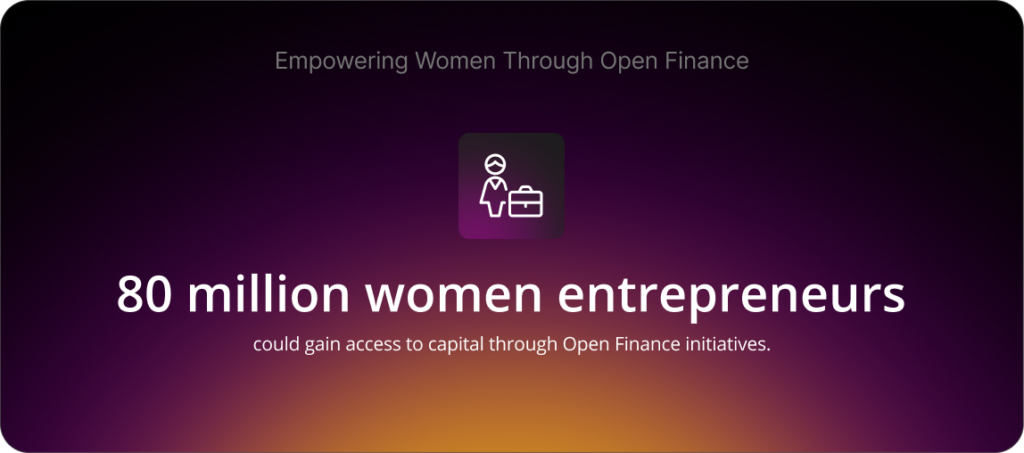Open Finance is rapidly expanding beyond its Open Banking origins, opening up financial services to a wider audience and giving people greater control over how they manage their money. This surge aligns with rising consumer demand for more personalized experiences, driven by technology and evolving regulations. According to a report by Virtue Market Research, the global Open Finance market size was valued at US$25 billion in 2023. It is expected to grow at a compound annual growth rate of 10.67% to reach US$50.83 billion by 2030, the research data shows. Meanwhile, Open Finance has the potential to be the next frontier for the growth of the financial services industry, particularly to reach the 1.4 billion people worldwide who do not have access to basic bank accounts, the International Monetary Fund (IMF) said in a 2024 report. However, the IMF warns Open Finance’s benefits depend on strong data safeguards from regulators.

Open Finance versus Open Banking
At its core, Open Finance represents the next evolution of data-sharing principles first introduced by Open Banking, expanding them to include a broader set of financial products, such as mortgages, insurance policies, pensions, and investments.
Through the use of secure Application Programming Interfaces (APIs), banks and third-party providers, such as FinTechs and other financial services companies, can connect to offer super app services that are better tailored to the needs of customers based on their data. Customer consent is central to Open Finance, and users are required to agree to share their data.
These services include more streamlined lending, accurate credit scores, instant transfers, insurance options, and dashboards that display all of a customer’s accounts in one place. However, PwC describes Open Finance as the “genesis of a revolution” that will break down the boundaries that have long separated the financial sector.
“In their place will rise a new ecosystem where the old silos of banking, insurance, asset, and wealth management and payments no longer exist as standalone entities,” PwC says in a research report.
“This revolution will give rise to a seamless ecosystem where a new breed of players delivers the full spectrum of financial service offerings all under one roof,” it adds.
Global momentum and regional regulations
The momentum for Open Finance is growing around the world. The UK has earned a reputation for having one of the world’s most advanced Open Banking systems. Implemented in 2018, it has served as a model for other countries seeking to introduce API-driven financial systems. Meanwhile, in Europe, the Payment Services Directive (PSD2) requires banks to share customer-approved data with licensed third-party providers, while Australia’s Consumer Data Right mandates similar openness across several sectors.
The EU plans to take PSD2 to the next level with its Payment Services Directive III (PSD3) and Payment Services Regulation (PSR), which are in the final stages of implementation. The Financial Data Access framework (FiDA) is progressing well and aims to close the gap between Open Finance and other players such as insurance companies.
“The implementation of PSD2 was an attempt to drive the financial sector toward a more open and competitive landscape, aligning with the broader goals of regulators,” PwC says.
“By mandating that banks share customer data with trusted third parties, it not only transformed the industry but also reflected the intention to pave the way for a more integrated, customer-centric financial ecosystem.”
Other countries, including the US, Canada, Brazil, India, the UAE, and Nigeria, are also moving forward with open financial systems and regulatory frameworks, PwC says in its report. For example, Canada introduced Bill C-69, known as the Budget Implementation Act, in 2024 to oversee the country’s open banking framework.
Diverse approaches in Asia
Local market needs and regulatory requirements largely shape each region’s approach to Open Finance. For example, Singapore has a proactive but voluntary approach, with the Monetary Authority of Singapore providing clear guidance that encourages industry collaboration.
In the Philippines, the central bank also introduced an open finance framework that encourages volunteer institutions to co-develop open finance standards, while Malaysia, Thailand, and Vietnam have adopted market-driven approaches.
Open Finance and financial inclusion
Meanwhile, in Africa – which received over US$1.9 billion in business-to-business FinTech funding in 2022 alone – Open Finance is closely tied to efforts to expand financial inclusion, where many rely on mobile money or informal lenders. By integrating financial services with telecom and microfinance data, providers are helping to bring unbanked populations into the formal economy.
“Open Finance done right could be a game changer, making it possible to bring financial services to people who traditionally have had none,” World Bank Group President Ajay Banga said in the IMF report.
“It could also be a boon for small businesses. We’re working with countries to promote open finance and help us reach our goal of providing capital to 80 million more women entrepreneurs who currently have little access to it.”
However, Open Finance benefits all consumers, giving them access to more complex products, such as tailored banking, insurance, and investment offerings. It also enables them to make fair comparisons and seek financial advice through their banking apps.

Opportunities for financial institutions
According to a research paper by Eurofi, Open Finance provides banks and financial services providers access to large customer datasets, providing new business opportunities and innovative financial products. This will help banks better serve their current customers, attract new customers, and build long-term profitability by monetizing innovative services.
“Open Finance solutions may indeed enable banks and insurers to improve their offering and develop cross-selling opportunities by integrating services from third parties seamlessly through APIs in the range of products they offer,” the report says.
“The potential streamlining of data collection processes via Open Finance infrastructures may also contribute to enhancing the efficiency of a number of processes such as credit applications, onboarding AML verifications, and claims management,” it adds.
Other benefits include cost-efficiencies by automating processes and reducing reliance on outdated manual systems, as well as offering ervices that meet evolving customer demands.
Remaining challenges and risks
However, the increased flow of customer data across multiple platforms has raised concerns about cybersecurity and the misuse of personal information. To protect consumers and financial systems, regulators and providers must implement strong encryption, manage APIs securely, and enforce robust regulations. Public confidence is also important for Open Finance to succeed.
Regulatory fragmentation is another concern, as some countries have introduced mandatory data-sharing frameworks, and others have opted for voluntary or market-led approaches. This inconsistency complicates efforts to build global systems that are interoperable and secure. Legacy banking infrastructure also remains a barrier, preventing financial institutions from accessing the real-time data flows that Open Finance requires to operate seamlessly. The cost of accessing APIs is another challenge in developing markets such as Africa.
Meanwhile, IMF managing director Kristalina Georgieva warned last year that there is a risk that dominant players could access significant financial data without sharing their own.
“The entry of new financial players can boost innovation and competition, but it also creates regulatory challenges,” Georgieva said at the time.
“Competition may be at risk if dominant players from other sectors can access financial data without sharing their own. Public authorities will need to closely monitor the ecosystem to ensure it meets policy objectives.”
Open Finance promises a revolution in how individuals and businesses access financial services, offering personalized products, streamlined cross-border payments, and economic empowerment for the world’s unbanked and underbanked. However, consumer trust, industry collaboration on API standards, and global regulatory alignment remain crucial for the sector. From Europe to Asia to Africa, each region’s approach – be it mandated or market-led – will determine how quickly Open Finance transforms the global financial ecosystem.
For more expert content on industry outlooks and innovation, subscribe to our newsletter or visit our Insights page.